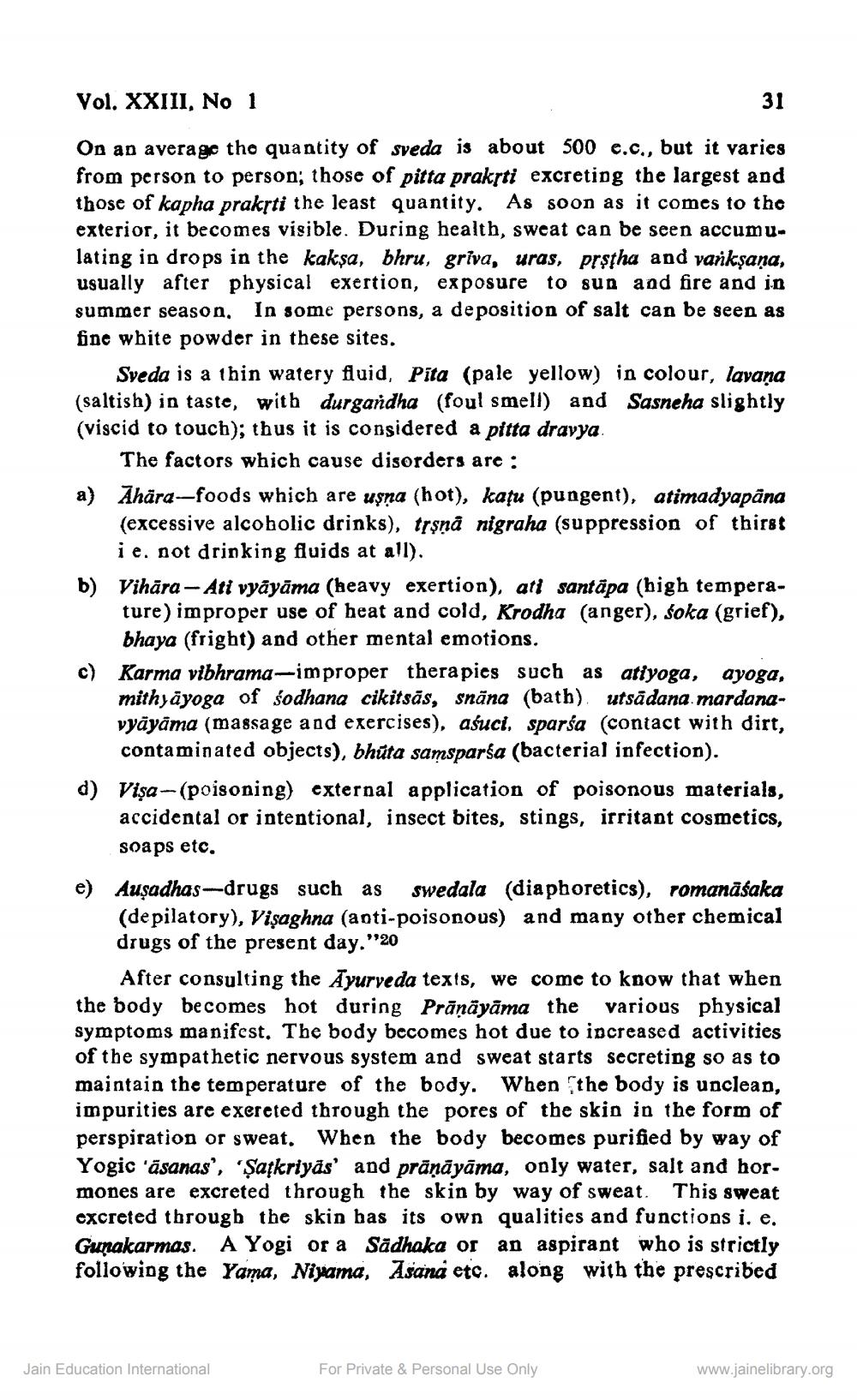________________
Vol. XXIII, No 1
31
On an average the quantity of sveda is about 500 e.c., but it varies from person to person; those of pitta prakrti excreting the largest and those of kapha prakṛti the least quantity. As soon as it comes to the exterior, it becomes visible. During health, sweat can be seen accumulating in drops in the kakṣa, bhru, grīva, uras, prṣtha and vankṣaṇa, usually after physical exertion, exposure to sun and fire and in summer season. In some persons, a deposition of salt can be seen as fine white powder in these sites.
Sveda is a thin watery fluid, Pita (pale yellow) in colour, lavaṇa (saltish) in taste, with durgandha (foul smell) and Sasneha slightly (viscid to touch); thus it is considered a pitta dravya
The factors which cause disorders are:
a) Ahära-foods which are usna (hot), katu (pungent), atimadyapāna (excessive alcoholic drinks), tṛṣṇā nigraha (suppression of thirst i e. not drinking fluids at all).
b) Vihara - Ati vyāyāma (heavy exertion), att santapa (high temperature) improper use of heat and cold, Krodha (anger), soka (grief), bhaya (fright) and other mental emotions.
c) Karma vibhrama-improper therapies such as atiyoga, mithyayoga of sodhana cikitsās, snāna (bath) utsädana.mardanavyāyāma (massage and exercises), aśuci, sparsa (contact with dirt, contaminated objects), bhuta samsparsa (bacterial infection).
d) Visa (poisoning) external application of poisonous materials, accidental or intentional, insect bites, stings, irritant cosmetics, soaps etc.
ayoga,
e) Auṣadhas-drugs such as swedala (diaphoretics), romanāśaka (depilatory), Visaghna (anti-poisonous) and many other chemical drugs of the present day."20
After consulting the Ayurveda texts, we come to know that when the body becomes hot during Präṇāyāma the various physical symptoms manifest. The body becomes hot due to increased activities of the sympathetic nervous system and sweat starts secreting so as to maintain the temperature of the body. When the body is unclean, impurities are exereted through the pores of the skin in the form of perspiration or sweat. When the body becomes purified by way of Yogic 'āsanas', 'Şaṭkriyas' and prāṇāyāma, only water, salt and hormones are excreted through the skin by way of sweat. This sweat excreted through the skin has its own qualities and functions i. e. Gunakarmas. A Yogi or a Sädhaka or an aspirant who is strictly following the Yama, Niyama, Asand etc. along with the prescribed
Jain Education International
For Private & Personal Use Only
www.jainelibrary.org




